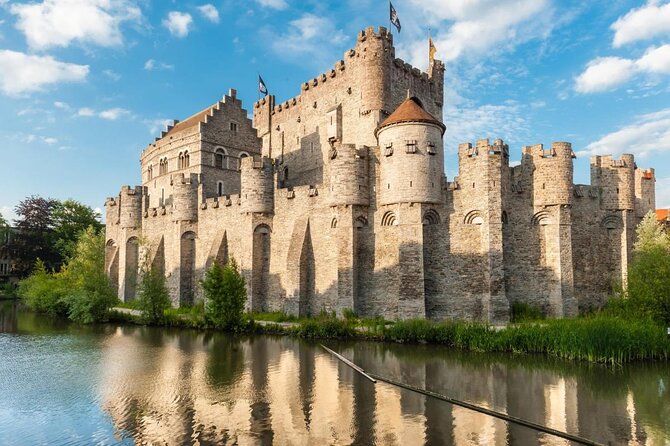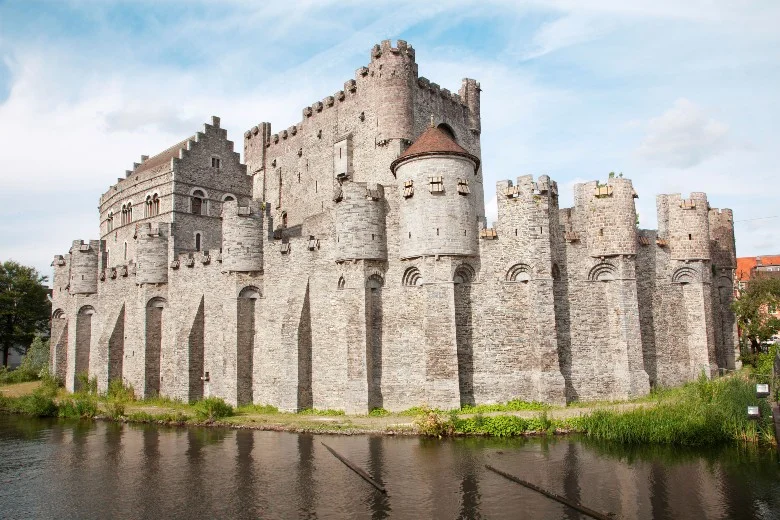Gravensteen Castle
Gravensteen Castle, often called the “Castle of the Counts,” stands as a medieval architectural marvel. This imposing fortress, in Ghent, Belgium, captivates visitors with its storied past and well-preserved structures. The castle’s name, from the Dutch “Graven” (Counts) and “Steen” (Stone), reflects its historical significance. It served as the residence of the Counts of Flanders. Exploring Gravensteen Castle, you embark on a journey through time and heritage.
Location of Gravensteen Castle
Gravensteen Castle is located in the vibrant city of Ghent, Belgium, within the Flemish region. Strategically positioned along the River Lys, the castle enjoys a picturesque setting. Ghent, known for its medieval architecture and cultural scene, provides an ideal backdrop. The castle’s central location allows easy access and offers a glimpse into medieval urban planning. Visitors to Gravensteen Castle experience both its historical marvels and the charming surroundings of Ghent.

History of Gravensteen Castle
Gravensteen Castle’s history dates back to the late 12th century, initiated by Count Philip of Alsace. He built the castle on a former wooden structure, intending it to symbolize his power. Throughout centuries, Gravensteen Castle underwent numerous transformations, playing a pivotal role regionally. In the 14th century, significant renovations reflected evolving architectural styles and defensive needs. The iconic keep and fortified walls enhanced its defensive capabilities. Its strategic location along the River Lys fortified its position as a formidable stronghold.
During the 16th and 17th centuries, Gravensteen Castle lost its military significance. It transitioned into an administrative and judicial role, serving as the seat of the Council of Flanders. By the late 18th century, the castle had fallen into disrepair and faced potential demolition. In the 19th century, its historical and cultural value was recognized, prompting preservation efforts. Individuals dedicated to safeguarding Ghent’s heritage initiated extensive restoration work. The castle retained its medieval character while accommodating modern visitors.

Current status
Today, Gravensteen Castle stands as one of Ghent’s most prominent landmarks. The meticulous restoration reflects its medieval origins, captivating visitors with a glimpse into the past. The imposing keep, fortified walls, and intricate interiors transport visitors to an era of knights. The castle serves as a museum, showcasing artifacts and exhibits narrating Ghent’s history. Visitors explore various sections, including the medieval hall, armory, and dungeon. The castle’s ramparts provide panoramic views of Ghent, offering a unique city perspective.
The castle also functions as a hub for cultural events and activities. Medieval reenactments, exhibitions, and educational programs engage visitors of all ages. These events offer dynamic ways to experience the castle’s history and connect with Ghent’s heritage. Ongoing preservation efforts ensure future generations appreciate its historical significance. The castle’s enduring presence reminds us of Ghent’s rich past and the Counts of Flanders’ legacy.
Admission
Community features
Castle features
Location
Official website
Featured listings














